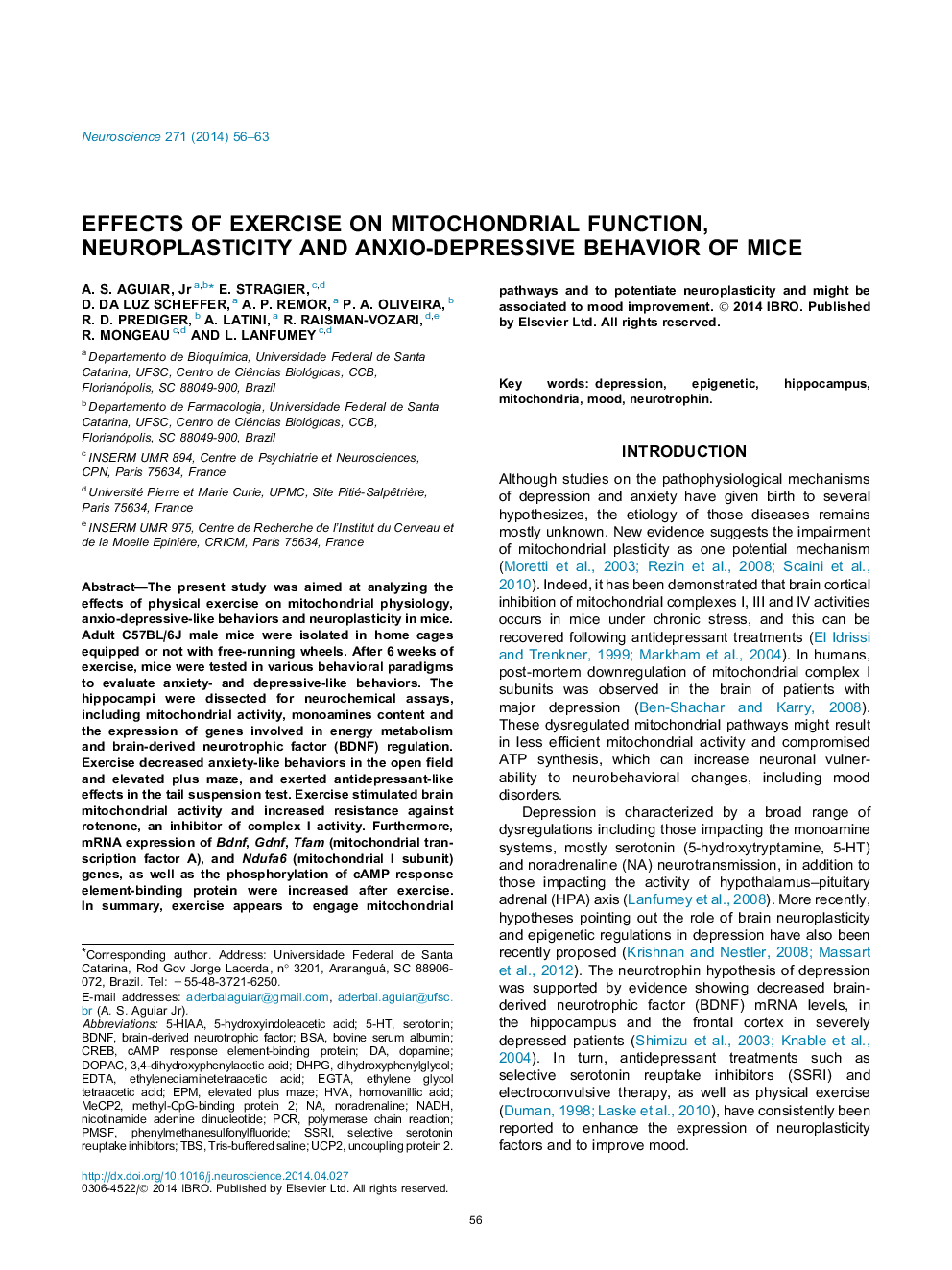| Article ID | Journal | Published Year | Pages | File Type |
|---|---|---|---|---|
| 6273827 | Neuroscience | 2014 | 8 Pages |
â¢Voluntary exercise produces antidepressant- and anxiolytic-like effects in mice.â¢Exercise stimulated brain mitochondrial activity and neuroplasticity.â¢Exercise stimulated expression of mitochondrial genes in the hippocampus.â¢There might be a link between mitochondrial and antidepressant-like activities.
The present study was aimed at analyzing the effects of physical exercise on mitochondrial physiology, anxio-depressive-like behaviors and neuroplasticity in mice. Adult C57BL/6J male mice were isolated in home cages equipped or not with free-running wheels. After 6Â weeks of exercise, mice were tested in various behavioral paradigms to evaluate anxiety- and depressive-like behaviors. The hippocampi were dissected for neurochemical assays, including mitochondrial activity, monoamines content and the expression of genes involved in energy metabolism and brain-derived neurotrophic factor (BDNF) regulation. Exercise decreased anxiety-like behaviors in the open field and elevated plus maze, and exerted antidepressant-like effects in the tail suspension test. Exercise stimulated brain mitochondrial activity and increased resistance against rotenone, an inhibitor of complex I activity. Furthermore, mRNA expression of Bdnf, Gdnf, Tfam (mitochondrial transcription factor A), and Ndufa6 (mitochondrial I subunit) genes, as well as the phosphorylation of cAMP response element-binding protein were increased after exercise. In summary, exercise appears to engage mitochondrial pathways and to potentiate neuroplasticity and might be associated to mood improvement.
